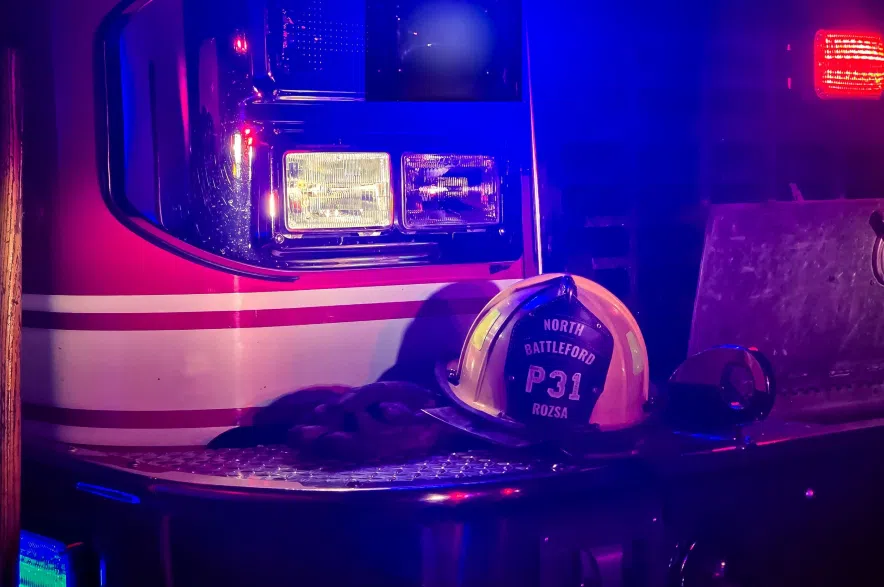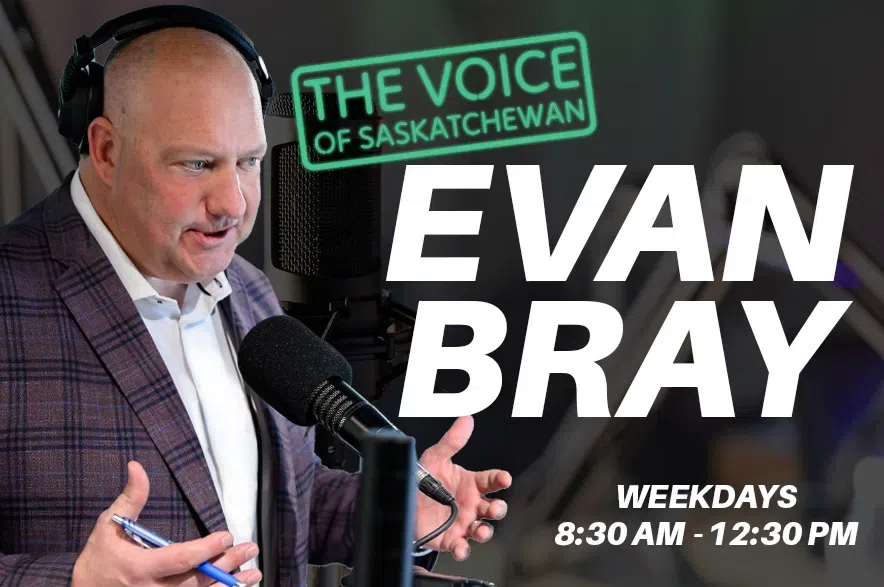In the midst of an unprecedented early wildfire season in Saskatchewan, and what the Canadian Association of Fire Chiefs (CAFC) calls ‘disturbing data’ from its latest census on fire safety, there are renewed calls for a National Fire Administration.
CAFC President Ken McMullen said the 2024 State of Fire and Emergency in Canada Report reveals glaring gaps in the coordination of wildfire response, one of the same criticisms the Saskatchewan Public Safety Agency (SPSA) and the province have been facing for weeks.
Read more:
- ATV ban, voluntary evacuation order lifted for Candle Lake: SPSA wildfire update
- Wildfire smoke could impact freshly seeded Saskatchewan crop
- Saskatchewan fisherman feeds wildfire evacuees with a taste of home

Data showed 9 in 10 fire departments in Canada had some involvement in wildfire response last year, but only half had the required equipment to meet the needs for the wildfire season. Pictured are La Ronge Regional Fire Department firefighters. (La Ronge Regional Fire Department/Facebook)
The report also found gaps in funding, policy, and strained resources.
For example, the census data showed 9 in 10 fire departments in Canada had some involvement in wildfire response last year, but only half had the required equipment to meet the needs for the wildfire season.
Only 18 per cent have benefited from the federal funding of wildfire equipment to the provinces and territories, and of the 123,608 firefighters in Canada in 2024, 71 per cent of them were volunteer firefighters. That’s a concern considering the data shows a marked decline in the number of volunteer firefighters in the country; there were 2,223 less of them in 2024 compared to 2022.
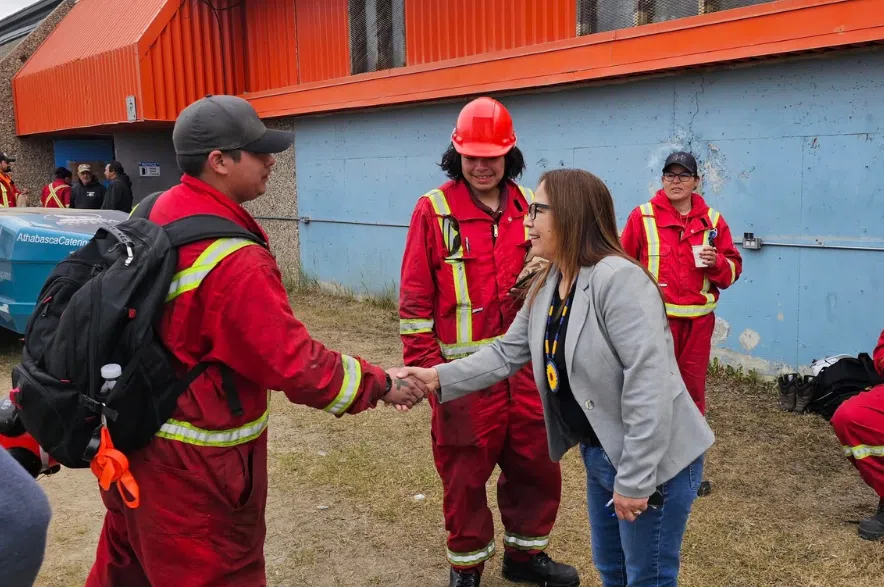
Lac La Ronge Indian Band Chief Tammy Cook-Searson thanks wildland firefighters for their service on June 12, 2025. (Jim Tammy Cook-Searson/Facebook)
Call for national body for more than a decade
McMullen said the call for a National Fire Administration has been on the association’s agenda for more than a decade and while the record-breaking 2023 wildfire season did create some discussion, fire services need more of a voice within the federal government.
“The G7 is happening right now. We’ve got all seven leaders of the seven countries in my province of Alberta. I know that apparently talks about wildfires are on the agenda, but quite frankly…where are the experts? Where are the fire chiefs that have local expert information? We’re not at those tables,” McMullen said.
The ramped-up wildfire season in Saskatchewan has forced the government to utilize dozens of municipal and volunteer fire departments from across the province to assist in fighting wildfires that have encroached on communities. McMullen said the same thing happened in Alberta in 2023.

A team of firefighters from Nova Scotia walk toward the Shoe Fire, near Little Bear Lake. (Nova Scotia Department of Natural Resources/Facebook)
“What we’re seeing, 2023 being the best example of that, is more and more reliance on our structural firefighters to support our wildland firefighters,” said McMullen.
“What we’re trying to do is create an organizing body to help assist with the structural and provincial wildland firefighter planning, making sure that our people and resources are sent across the country to the highest risk area with as much ease as possible.”
Administration at the Prince Albert Fire Department agrees with McMullen. Fire Chief Kris Olsen said there is a need to have a national body or federal advocacy group.
“It goes beyond that. It’s emergency management,” he said.
Deputy Chief Alex Paul noted the United States has FEMA, which coordinates across federal agencies to help state, local, tribal, and territorial partners respond to wildfires nationwide through a variety of grant programs.
“We don’t really have an equivalent body in Canada that does that. It all falls to the local municipalities to fund purchases of trucks and halls and that sort of thing,” said Paul.
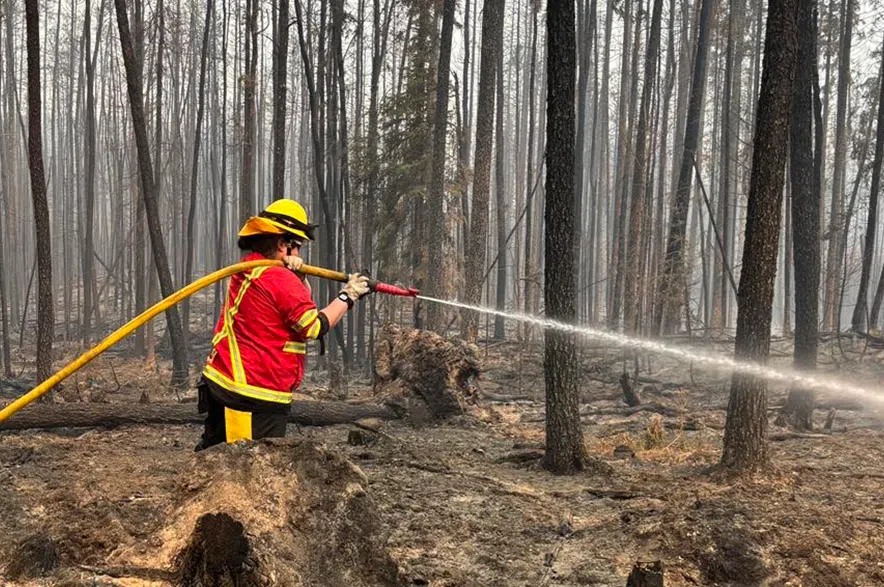
Buckland Fire and Rescue is helping to fight the wildfires in the north. (Buckland Fire and Rescue/Facebook)
Joint Emergency Preparedness Program defunded
The government of Canada used to fund the Joint Emergency Preparedness Program (JEPP) which was designed to enhance response capabilities through financial contributions to provinces and territories.
Its goal was to create a reasonably uniform standard of emergency response across the country, but the federal government ended funding for it in 2013 despite resistance from local governments and organizations that relied on JEPP for training and equipment costs.
The Village of St. Louis in central Saskatchewan is currently in the process of building a new fire hall, which was paid for entirely through local budgets.
Fire Chief James Brake and his volunteer fire department have been helping to fight wildfires in La Ronge.
While he noted the involvement of fire crews and equipment from American states like Utah, Oregon and Alaska, Brake believes it would be better for Canada to be prepared with its own resources.
“Maybe train our Canadian Forces to do wildland or something of that nature, so that we could be self-sufficient. I think this (wildfire season) is a wake-up call,” Brake said.
SPSA President and Fire Commissioner Marlo Pritchard said there is a Council of Canadian Fire Marshalls and Fire Commissioners, and the appointed heads of each province coordinate with fire associations.
“So we have a mechanism to pull information and data. Can it be expanded and enhanced with some federal commitment? I mean, we work with Public Safety Canada, so of course, there’s always room for improvement, but there is already a conversation on between the Council of Fire Marshalls and Fire Commissioners with the federal government and that will continue and again, as we see the situation like this year, we will probably have more conversations in the coming months,” Pritchard said.
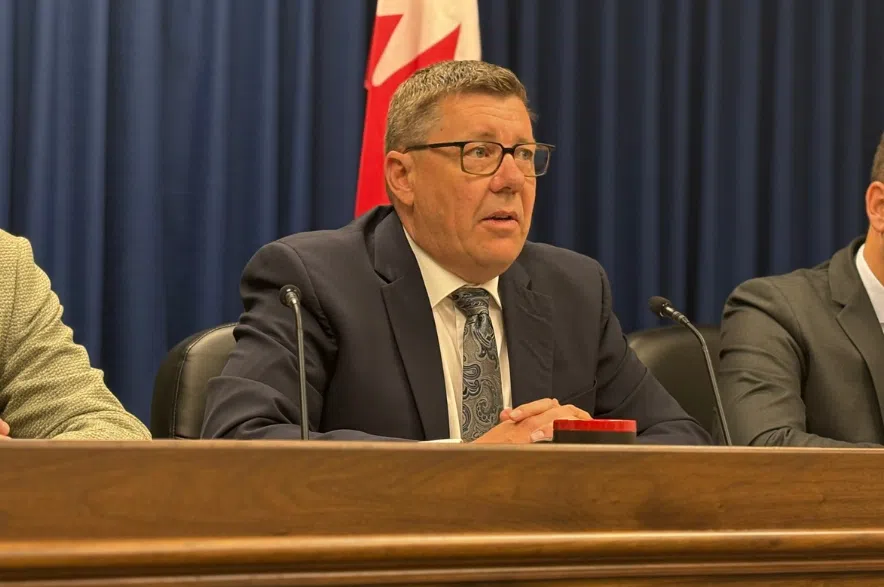
Saskatchewan Premier Scott Moe announced an additional $500 in financial assistance for those impacted by northern wildfires on Wednesday, June 11, 2025. (Mia Holowaychuk/650 CKOM)
Premier Moe expresses caution about national body
Premier Scott Moe said Saskatchewan would be willing to discuss and be a part of a national fire fleet of air tankers and wildland firefighters, but he’s cautious about a national administration or set of standards.
“For a place like Toronto or Vancouver, it might be very different for what we would be looking for in a place like Creighton or the tri-cities in northern Saskatchewan. So, there always needs to be some flexibility in that space,” said Moe.
As for supports provided to municipal and volunteer firefighters, Moe referred to increased funding in the way of capital investments for fire halls, personal equipment, and increased tax benefits for volunteer firefighters, but he also acknowledged the province needs to continue having conversations.
“Can the provincial government play a larger role in ensuring those that are volunteers not only are receiving a tax benefit when they go to work and save buildings and people, but have the proper and appropriate personal protective equipment so that their families know that when they go that they are working with the latest and best equipment to keep their family members safe?”
Whether it comes in the return of a modernized national JEPP or not, McMullen articulated there needs to be incentives for provinces, territories and local governments to secure an economy of effort and provide a solution to coordination issues. He said there needs to be a national reinvestment in fire and emergency preparedness and equipment.
— by Nigel Maxwell
Read more:
